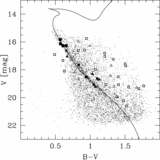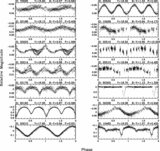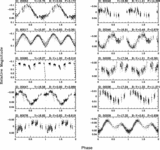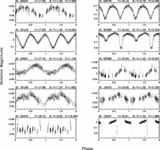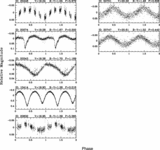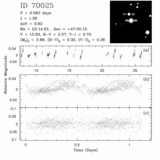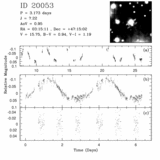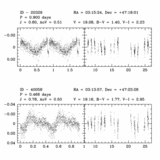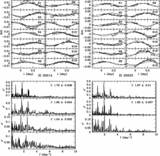Image Details
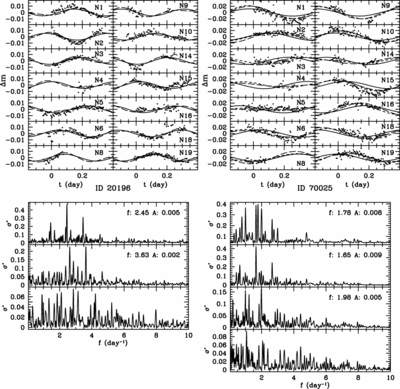
Caption: Fig. 9.
Light curves and power spectra for γ Doradus candidates 20196 and 70025. In the light‐curve plots in the top left and top right, each subpanel shows a single night’s observations, with a label in the upper right corner of each subpanel identifying the night of the observing run and an arbitrary x‐axis zero point. The solid line shows a single‐component fit to the light curve, the long‐dashed line gives a two‐component fit, and the short‐dashed line gives a three‐component fit. The bottom left and bottom right panels show successive optimum spectra for 20196 and 70025. The upper subpanel shows the spectrum of the light curve that identifies the strongest frequency component present in the data. The component’s frequency and amplitude are labeled in the upper right corner of the subpanel. The successive subpanels from top to bottom show the spectra after taking into account the known constituents identified in the previous panels. The bottom subpanel gives the spectra after taking into account the two previously identified components. No stable component is identified in the bottom subpanel.
Copyright and Terms & Conditions
© 2006. The American Astronomical Society. All rights reserved. Printed in U.S.A.


